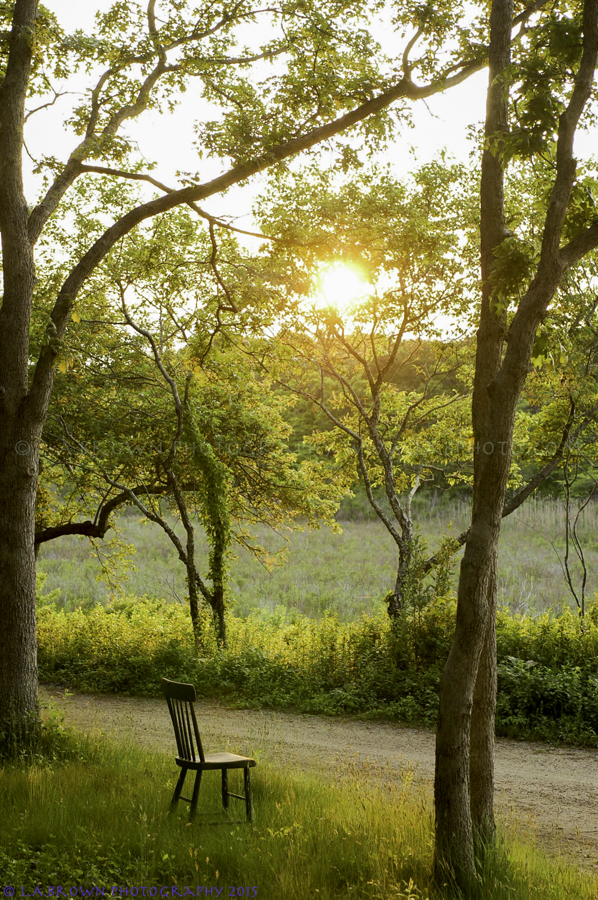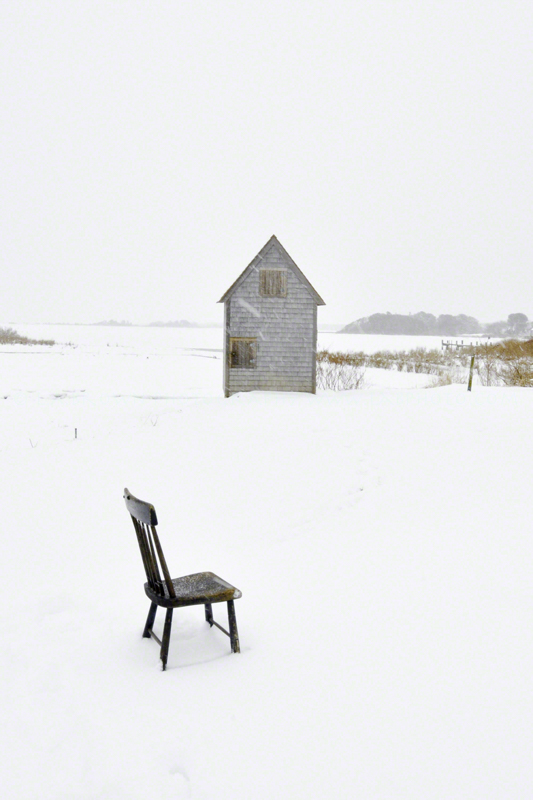Mary's Chair
The Story:
Why Mary’s Chair? In a cottage with the classic white picket fence, 11 Norton Street Edgartown, Massachusetts, is where in 1997 I made a home. Delighted to be in town, near the buzz and yet set aside on a quiet street. The cottage was heaven. My landlord, Mary Drake Coles, resided in the back cottage and I in the cottage on the road. Although she was 65 years older than me, she was a long time pal of mine.
One of the many beauties of Martha’s Vineyard is that friendships have no age limit. I met Mary in 1979 at the beach of Cow Bay in Edgartown; I was 15 years old. She was the dear friend of the Partridges, a family that I was babysitting for. Through the next 15 years Mary and I saw each other often; we became friends.
In the beginning of my artistic career from, 1987-1993, Mary, a painter, and I exhibited together. The first of these was an alumni show at Kent Place School in Summit NJ. There after, we shared a few shows at the Field Gallery. A veteran of the art and gallery world, Mary was a guide into that realm. She was, for me, a sage. Little did I know at the time that she was teaching me life long lessons about commitment, inspiration and passion. You see, Mary was a blind artist.
1997, not a particularly special year on the historical calendar. However, it is a year I will not forget. That is the year the opportunity to rent Mary’s cottage was presented to me. Delighted and over the moon, I said yes. My father had just died of leukemia. 11 Norton Street became a haven for healing. Being blind and having polio, Mary was not known for her joy. In this instance, it seemed, she too was happy at our continued friendship. As landlord and tenant, we found much to chat about. Knowing Mary since I was a teenager was a blessing. The courage it took to be Mary Coles was inspiring. Despite contracting polio as a young girl and the loss of site in the 1950’s, Mary persevered. She lived alone with her trusted guide dog. Through the years she had a number of dogs. Ned was the dog of the hour. During that era, you could always see Mary walking through the streets of Edgartown; Ned guiding her in one hand and the other polio stricken arm swinging at her side. Mary could not see color but she could feel it. I remember, at one point I asked if I could paint the interior of the cottage. Mary said yes as long as I would come back and describe the colors I chose. For an hour I sat with her describing in vivid detail the tones of green I had chosen. I will never forget that hour.
Unfortunately, I was only there for 15 months and Mary died…at age 95 it was to be expected. I was crushed. To add to the trauma, because Mary and I were old pals, we did not create a lease. The house would be sold. Mary never married and never had children. Before the house was sold, her family of nieces and nephews came to the island to sort things out. Unlike many real world situations and like many island stories, the family was superb to me. Not only did the family want me to stay in the cottage as long as I possibly could, but they also gave me a number of Mary’s things. I was offered her paints, brushes and pastels, which was like gold…I did not take the gold. I was however also offered some benches, her Kent Place alumni necklace and three chairs. Two chairs where alike, cranberry colored and old. The other chair, strong, old, black, a cottage kitchen chair; this was Mary’s Chair.
May 1998 is the first time I used the chair. In a Katama hay field, I stood on it as the means to another shot. Wanting to get the most from the scene, I walked away for another perspective. With Mary’s chair still on the hay, I thought, ‘ah that is the shot Lisa’. Katama Hay is the first of photographs with Mary’s Chair. I have since used the chair in various scenes and in all four seasons. The chair inspires me. From the response these images have received, the chair photographs, like Mary, inspire.































